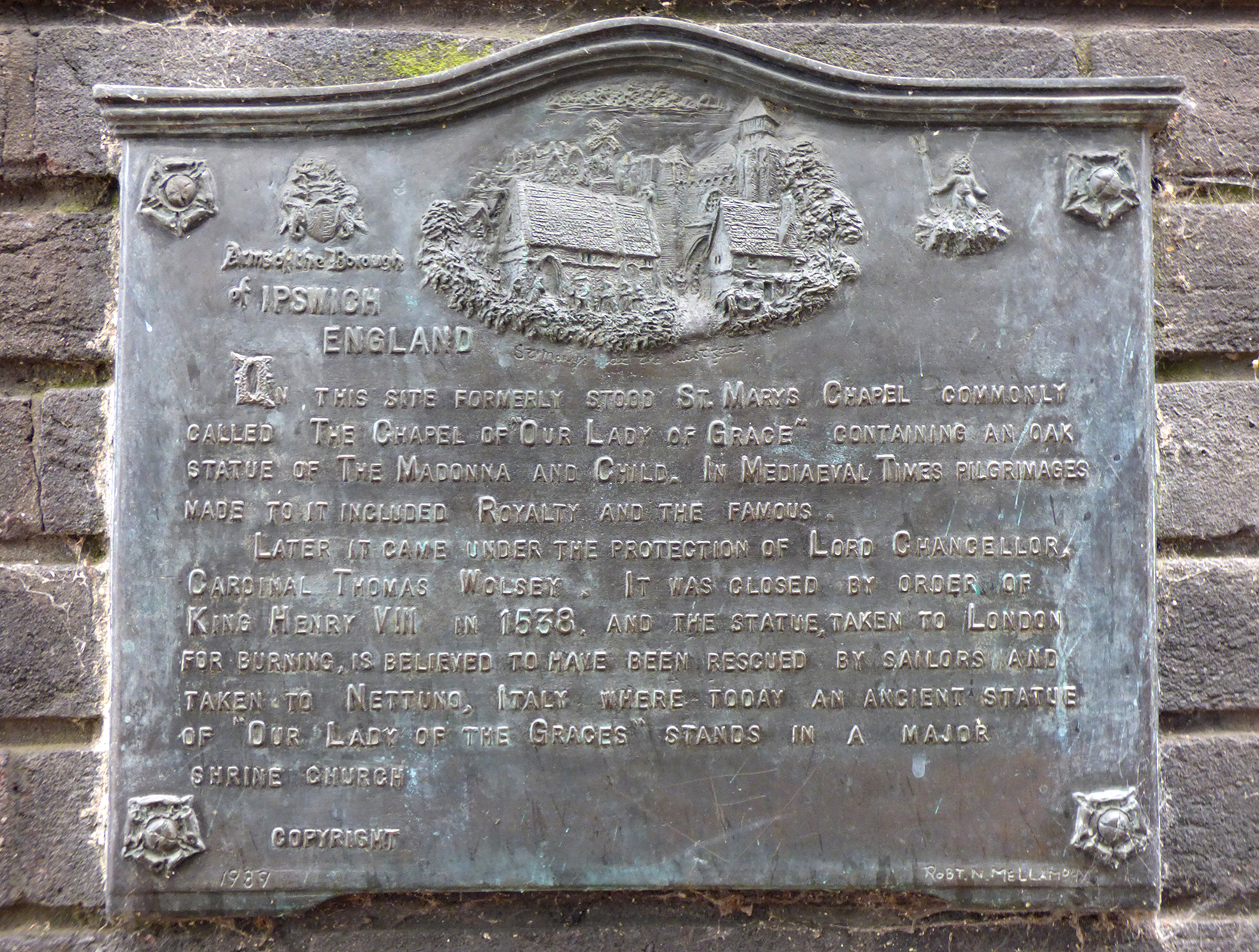Lost Shrine Chapel of Our Lady of Grace, Ipswich

The shrine chapel of Our Lady of Grace once stood in Lady Lane, just outside the west gate of the town of Ipswich. The shrine is first recorded in 1152 A.D. and just over a century before Princess Elizabeth, the daughter of Edward I, married the Count of Holland in the shrine chapel in 1297 A.D.
The shrine stood, or more specifically, used the same structures as the chapel of All Saints that was on the same site. Although it is not mentioned in The Domesday Book of 1086 A.D. and only first recorded in 1219, it was most certainly a much earlier construction that soon changed its name to the chapel of ‘Our Lady of Grace’ or Gracechurch [1].
For centuries, ‘Our Lady’s Dowry’ was used as the title for England in the later Middle Ages, which after the Reformation became very popular amongst English Roman Catholics. Late antique, early medieval England had many shrines for Marian pilgrimage to the Virgin Mary from as early as 540 A.D. at Glastonbury to 1061 A.D. in Walsingham, and by the High Middle Ages there were sixteen such shrines to Mary in Suffolk alone, with Our Lady of Grace being the second most visited shrine in the whole of England. The people of Suffolk who lived and toiled in the medieval period, despite “their suffering and expectation of an early death, saw Mary as being on their side.” [2] Even today about half of the medieval churches in Suffolk remain dedicated to St Mary.
The wooden statue of the Virgin Mary that was carved in 1182 A.D. for the shrine in Ipswich was venerated there until 1538 A.D., after which it disappeared. Some believe that this lost statue now resides in Nettuno, about 60 kilometres south of Rome along the Tyrrhenian sea [3]. The disappearance and translocation is believed to have emanated from the Act of Supremacy passed by the British Parliament in 1534 A.D. that saw the gradual break-up of the relationship with Rome. Once King Henry VIII declared himself Head of the Catholic Church in Britain, the separation of the Anglican Church from the Roman hierarchy was hastened. Thomas Cromwell, Henry’s chief minister was ordered in 1538 A.D. to despoil the Ipswich shine, however the statue escaped this fate and ended up in Cromwell’s private chapel in London.

Perhaps it was because of its reputation for miracles? The maid of Ipswich miracle of 1516 A.D. was renowned all over England and was famously recorded in Thomas More’s The Supplication of Souls, published later in 1529 A.D. In it he records an eye witness account of how Anne Wentworth, the 12-year-old daughter of his friend Sir Roger Wentworth who having been taken to the Shrine in Ipswich was freed from her violent seizures. However, in order to escape the Catholic fury under Edward VI the statue was later smuggled onto a ship bound for Naples, which was forced to anchor between Anzio and Nettuno having ran into a storm [4].
In 1977, the Guild of Our Lady of Ipswich was founded and in 2002 a replica of the statue at Nettuno was blessed and installed by the Bishop of Richborough in the church of St Mary at the Elms in Ipswich.
Today the site of this once famous shrine chapel is marked by a humble plaque and small statue of Our Lady of Grace.

References
1. Ipswich Society (2014) Newsletter April 2014, Issue 195.
2. Knott, S. (1999) suffolkchurches.co.uk
3. Allegri, R. (2009) A Tale of Two Cities.
https://www.messengersaintanthony.com/content/tale-two-cities
